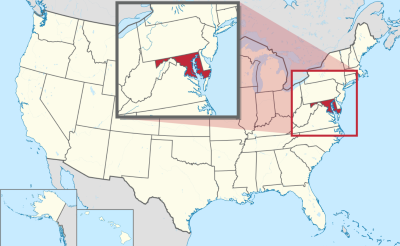Here you’ll find the largest list with Maryland hosting reviews. We’ve listed all Maryland web hosting providers with our UNCENSORED review and that of users.

Quick Facts
Internet Speed: 23.8 Mbps downlink; 6.1 Mbps uplink
Population: 6 million
Internet coverage: 85% of residents
Main Internet services: Cable, DSL, Fiber
Main Internet Service Providers: Comcast, Verizon, FIOS by Verizon
Colocation Datacenters: 22
Colocation Market: Emerging
Internet in Maryland
According to Akamai.com, the average downlink Internet speed in Maryland is 23.8 Mbps and the average uplink speed is 6.1 Mbps.
In 2016, the population of Maryland was roughly 6 million. Over 85% of residents have access to the Internet, especially broadband connections.
Main Internet services provided in Maryland are as follows:
– Cable – 93% coverage
– DSL – 91% coverage
– Fiber – less than 9% coverage
Main Internet Service Providers established in Maryland are the following:
– Comcast (Cable) – 90% availability
– Verizon (DSL) – 85% availability
– FIOS by Verizon (Fiber) – less than 10% availability
Gigabit Internet in Maryland
Gigabit services are scarcely available in Maryland, as reflected by the very low penetration rate of only 4.5%. Gigabit Internet is available in Baltimore exclusively, but actual services are not provided to residential customers, but rather to businesses located in select areas. Comcast and Verizon have shown interest in adding gigabit Internet to their portfolio but no concrete plans have been released in this regard. Residential customers can currently get speeds of 150 Mbps at most.
Colocation Datacenters in Maryland
According to datacentermap.com, there are currently 22 colocation datacenters located in Maryland. Most datacenters are established in Baltimore (12), while the rest are distributed across smaller cities, such as Frederick, Laurel, and Silver Spring.
In Baltimore, important colocation providers include the following:
– InfraDMS
– Expedient Datacenters
– TierPoint
– Commercial Media Corp.
– AiNET
Prominent Colocation Providers – Expedient Datacenters
One of the largest colocation providers established in Baltimore is Expedient Datacenters. This company operates a 22,000-square-foot facility located in the central business district of Maryland, and provides traditional colocation services, in addition to diverse disaster recovery and business continuity solutions. The facility enables affordable access to suites, cages, and rack cabinets. Amenities include: auto-cutover diesel generators, CRAC cooling systems (16 in total), 6 UPS auto-failover systems, connection to 10 GB fiber ring. The datacenter is not carrier neutral.
Prominent Colocation Providers – InfraDMS
Another important colocation provider located in Baltimore is InfraDMS. This company operates a facility located in a select area in Baltimore, which serves as one of the region’s most important hubs for colocation services. Customers can opt for wholesale and retail colocation services, in addition to diverse disaster recovery and business continuity solutions. Amenities include: multiple power feeds, fiber links, dedicated generators, and battery backup. The facility is carrier neutral, with on-site access to major telecoms and other prominent carrier hotels located in close proximity.
Colocation Industry in Maryland
Maryland has always been a favored alternative for customers that cannot afford the high prices boasted by New Jersey, New York, and Northern Virginia. Much of the demand for inexpensive colocation services ends up being met in Maryland – Baltimore in particular. Reasons that entice customers to get established in the region are centered around the relatively low electricity cost, lower than New York and New Jersey, but much higher than Virginia and Northern Virginia in particular. This state is also at lower risk of natural disasters, and exhibits a favorable climate, with relatively mild weather which provides datacenters with many hours of free cooling throughout the year.
Disadvantages for Colocation
However, there is also a number of disadvantages that prevents further investments from colocation providers, and is as follows:
– rather underdeveloped technical infrastructure, with no plans for improvement
– no significant datacenter tax break incentives to encourage more investments in this sector
– the state’s close proximity to other top markets means that high-paying customers can easily opt for those markets in the detriment of Maryland


